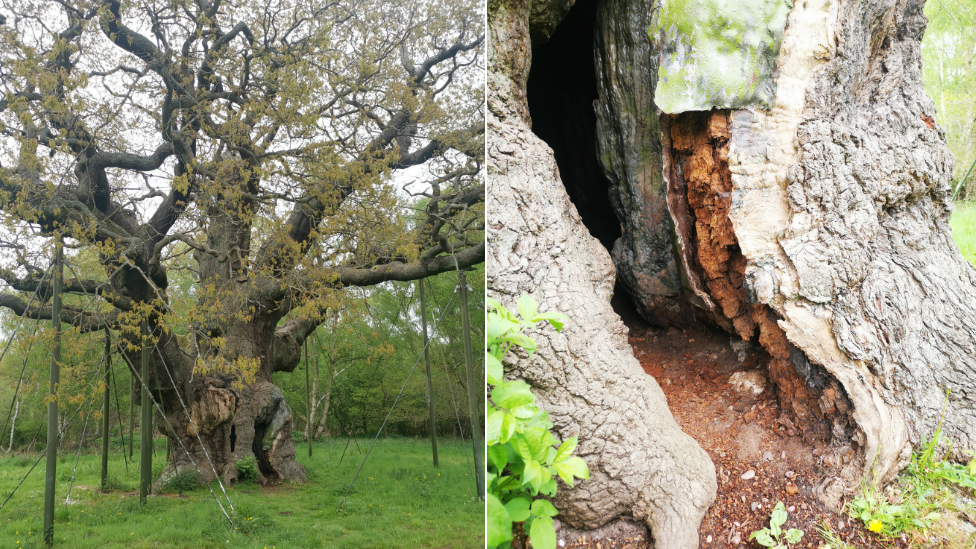Action to help 'Robin Hood' tree in heatwave

Visitors said they were shocked by how few leaves the tree had
- Published
An ancient oak tree associated with the legend of Robin Hood is feeling the strain in the current heatwave, experts have said.
The Major Oak in Sherwood Forest, in Nottinghamshire, is thought to be between 800 and 1,100 years old and has survived fires, winds and snowstorms during its long life.
But now conservationists have taken action to protect it from the latest threat - the soaring temperatures.
The RSPB, which runs the nature reserve, said it had delivered 3,000 litres (660 gallons) of water to the tree's thirsty roots using special irrigation equipment.
In a social media post, the charity said: "As the heatwave continues, the legendary Major Oak is feeling the strain and we're taking action.
"Thanks to the tech we've installed, we've been alerted that the ancient tree needs extra support.
"This is just one part of our ongoing efforts to care for this iconic natural treasure as it faces even more challenges."
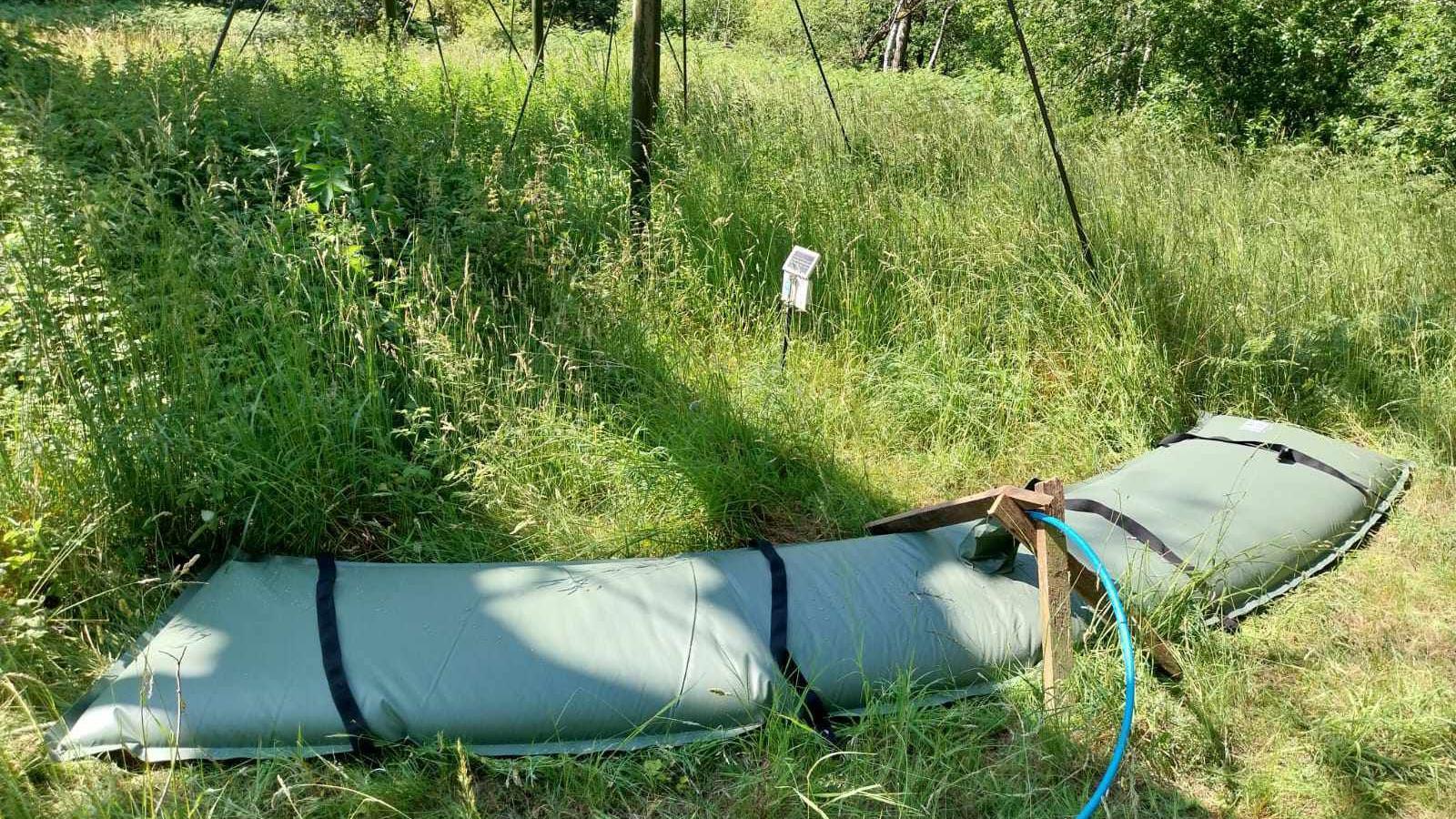
A system has been set up to make sure the tree is well refreshed
Visitors to the site have expressed concern about the impact of the heat on the tree, which, as legend has it, once gave shelter to the outlaw Robin Hood.
Chris Hudson said he had never seen so few leaves on the tree in the summertime.
"It shocked us," he added.
"The higher section has no smaller branches [or] twigs to produce leaves on and there's hardly any on the extremity."
And Tracy Hall said she thought the tree was looking "particularly poor".
"The signs that it is struggling have been there a couple of years now," she said.
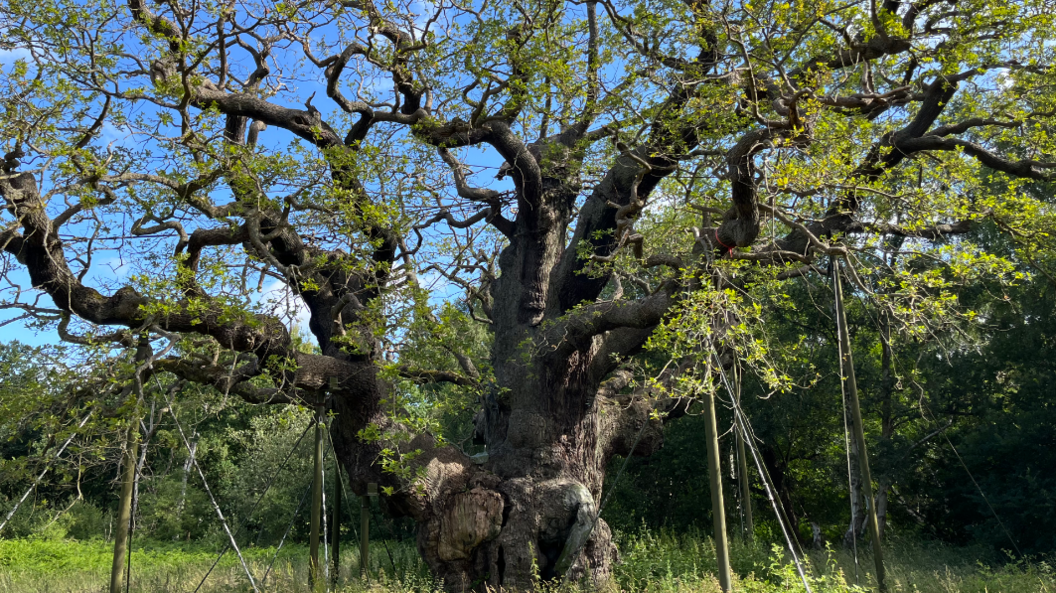
A wider restoration plan is under way to protect the tree
Last year the RSPB dispelled rumours the tree was dying.
Responding to recent concerns about the tree's health, it said: "This watering system is just the latest development in a whole range of activity we've undertaken.
"We have been working with leading arborists and soil health specialists for several years, specifically focusing on the health of the Major Oak and possible solutions to the issue of soil compaction around its roots, in particular.
"On their advice, the vegetation around the tree is left to grow through its full cycle so its roots fully develop and help to break up the compacted soil, to retain moisture and nutrients and to enhance the biodiversity of its enclosure by attracting pollinating insects and other wildlife."
The charity said it was into the third year of a root restoration programme overseen by one of the UK's leading soil microbiology specialists.
Get in touch
Tell us which stories we should cover in Nottingham
Follow BBC Nottingham on Facebook, external, on X, external, or on Instagram, external. Send your story ideas to eastmidsnews@bbc.co.uk, external or via WhatsApp, external on 0808 100 2210.
Related topics
- Published8 July 2024
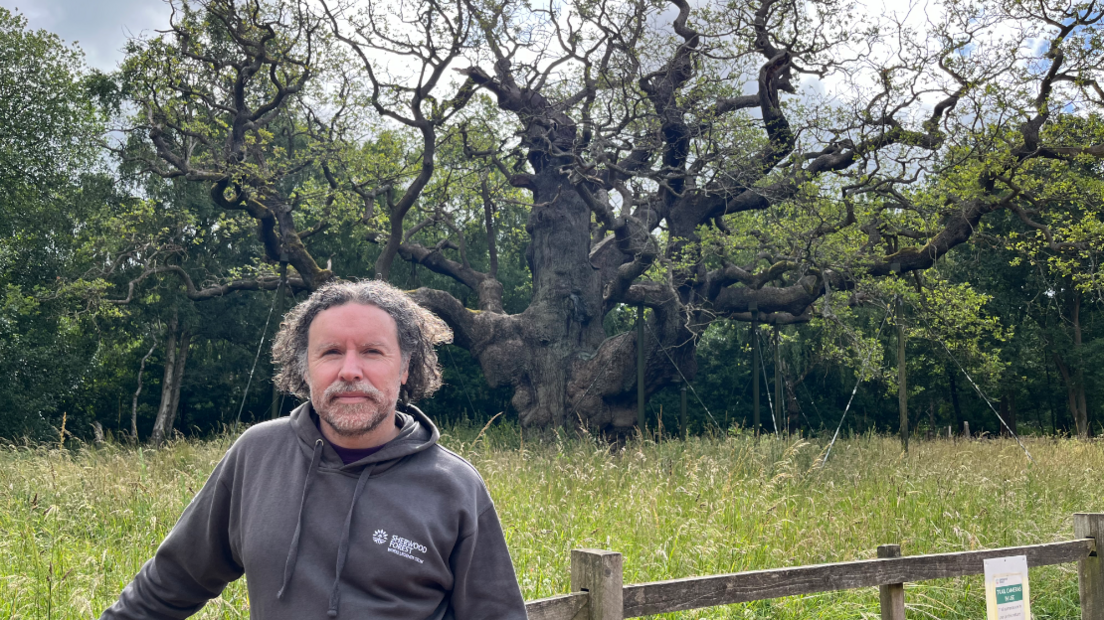
- Published3 June 2024
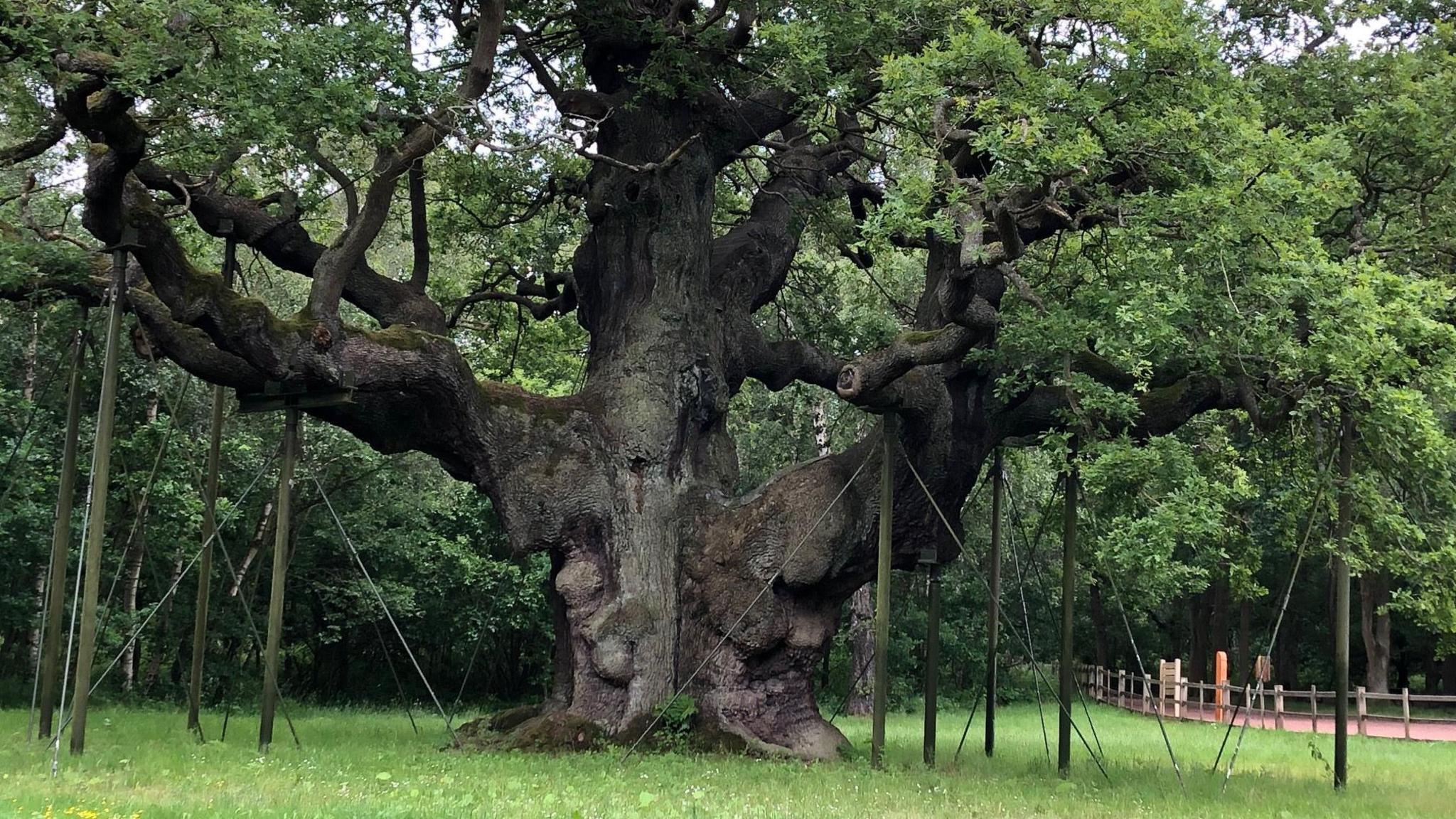
- Published22 July 2020
